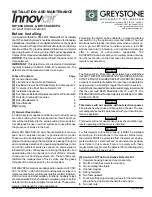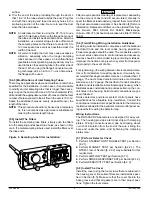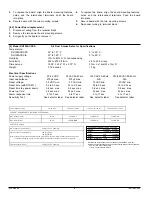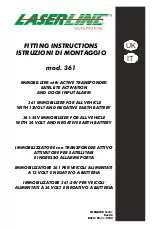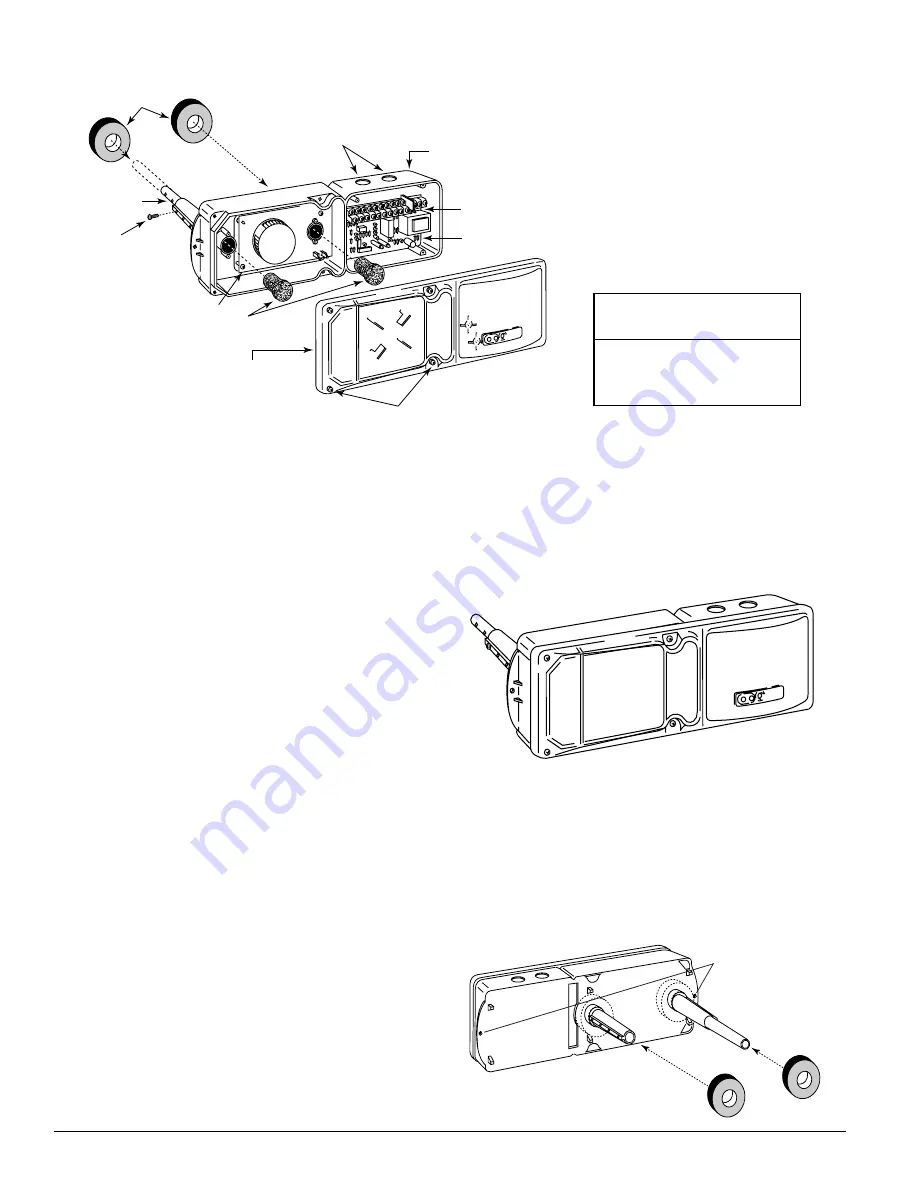
the supplemental tube matches the number as deter-
mined in step 2. Secure with the #8 self-tapping screw
into the bottom of the permanent tube.
NOTE: For ducts greater than 1
1
/
2
feet in width, refer to sec-
tions [5.4.1] and [5.4.2].
Figure 2. Sampling tube connected to duct smoke
detector:
[5.3] Secure The Detector Housing To The Duct
Slide the foam gaskets over the tube bushings as shown in
Figure 3. Use the two machine screws to screw the detector
housing to the duct. CAUTION: Do not overtighten the
screws.
Figure 3. Installation of foam gaskets over sampling
tube bushings:
SCREW HOLES FOR
ATTACHING HOUSING
TO DUCT WORK.
9. One inlet tube end plug
10. One telescoping sampling tube
11. One #8 self-tapping screw for the telescoping sampling
tube
NOTE: For ducts over 1
1
/
2
feet, longer inlet sampling tubes
must be ordered to complete the installation. They
must be the correct length for the width of the duct
where they will be installed. See Table 1 on page 3
to determine the inlet tube required for different duct
widths.
[5] Installation Sequence
[5.1] Verify Duct Air Flow Direction And Velocity
Model DH100ACDCA detectors are designed to be used in
air handling systems having air velocities of 500 to 4000 feet
per minute. Be sure to check engineering specifications to
ensure that the air velocity in the duct falls within these pa-
rameters. If necessary, use a velocity meter to check the air
velocity in the duct.
[5.2] Drill The Mounting Holes
Remove the paper backing from the mounting template sup-
plied. Affix the template to the duct at the desired mounting
location. Make sure the template lies flat and smooth on the
duct. Center punch holes A and B. Drill the holes as indicat-
ed on the template. Insert the two jack nut receptacles.
Drive a #10 machine screw into jacket to flare the retainer,
then back out the screw to use for detector mounting.
[5.2.1] Sampling Tube Installation for Ducts Less
Than 1
1
/
2
Feet Wide (see Figure 2)
1. Remove the front cover.
2. Use the tube installation chart above to determine the set
screw setting.
3. Slide the sampling tube into the housing bushing.
4. Align the holes in the bushing with the holes in the sam-
pling tube. Make sure the number of exposed holes on
D100-68-00
2
I56-1525-000
FOAM
GASKETS
PLASTIC
SAMPLING TUBE
CONDUIT HOLES
DETECTOR
HOUSING
TERMINAL STRIP
DETECTOR
COVER
SAMPLING TUBE
FILTERS
COVER MOUNTING
SCREWS
PLASTIC SAMPLING TUBE
SELF-TAPPING SCREW
POWER BOARD
DETECTOR BOARD
Tube Installation Chart:
Supplemental
Duct
Tube Holes
W i d t h
5
12”-14”
6
14”-16”
7
16”-18”
[3] Figure 1: Exploded View Of Duct Smoke Detector Components

